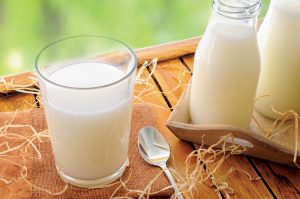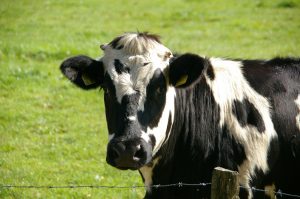Home > Lifestyle > Food For Thought > Deciphering Dairy: Myths vs Facts
Deciphering Dairy: Myths vs Facts

With the rise of modern technology and farmers changing the way they produce dairy, many milk myths have been floating around. It can be hard to tell what’s accurate. We went straight to the source – dairy farmers – to get the facts.
See more: Milk and Dairy Fun Facts
Myth: Milk sometimes contains harmful antibiotics and can be unsafe to drink.
Fact: Both milk and dairy foods undergo rigorous testing before they ever reach a grocery store. In fact, milk and dairy products are among the most strictly regulated foods in this country. Occasionally, it is necessary for farmers to use antibiotics when cows become sick. However, a cow receiving treatment for illness gets separated from the rest of the milking herd to ensure her milk does not go into the supply. All milk goes through strict testing for antibiotics on both the farm and in the processing plant before going into any food item. This testing system pushes farmers to keep their milk antibiotic-free. The farmer must pay for the loss of the full tanker of milk.
See more: Do You Know Your Milk? Milk is the top source of calcium in American diets. It would take 7 cups of raw broccoli (a typical serving is 1 cup) to get as much calcium as you get in just one 8-ounce glass of milk.
Myth: Modern farmers treat cows like nothing more than milk-producing “machines.”
Fact: Farmers care for their cows by providing a nutritious diet, good medical care and healthy living conditions. Dairy cows have to be healthy in order to produce nutritious milk. In fact, they receive regular check-ups, vaccinations and prompt treatment of illnesses. Farmers generally keep dairy cows in barns or similar housing. This protects the animals from predators, disease and bad weather conditions. Modern dairy farm housing is well-ventilated, kept at comfortable temperatures, clean and designed to meet an animal’s specific needs.

See More: Yogurt, Ice Cream and Cheese Recipes Honor June Dairy Month
Myth: Modern dairy farms are bad for the environment and don’t practice sustainable agriculture.
Fact: Dairy farmers usually live on or near the land they farm, so they work exceptionally hard to protect their natural resources. The latest research shows that the U.S. dairy industry accounts for only about 2% of U.S. greenhouse gas emissions. Dairy is one of the most regulated industries in agriculture. Government agencies continuously inspect these sites, and water is reused numerous times for cleaning and cooling. Farmers also work with industry manufacturers, university experts and others to improve overall air quality. Dairy farmers invest a great amount of money each year to enhance the ways they manage manure and protect the environment. Nutrient management plans guide the amount source, placement and timing of manure on fields. Farmers remain deeply committed to providing nutritious dairy products for consumers in a way that makes the environment better.
Source: Dairy Business Association




